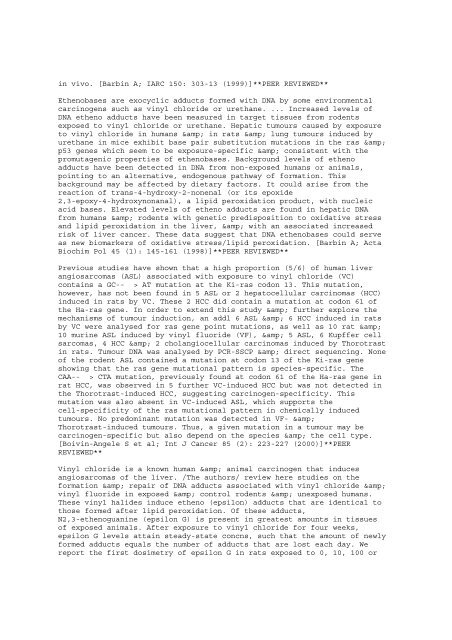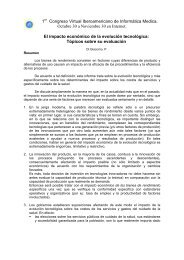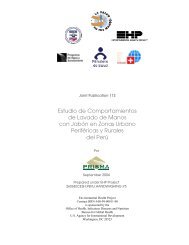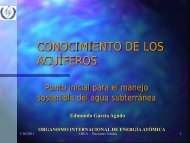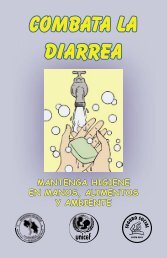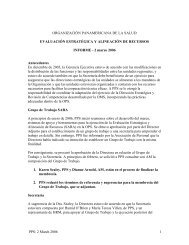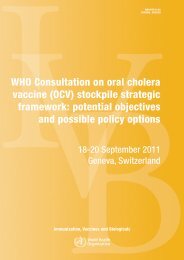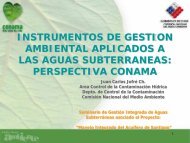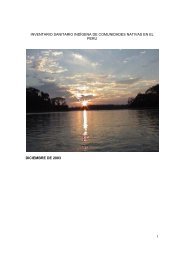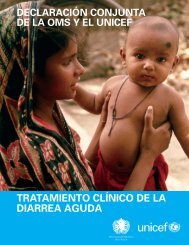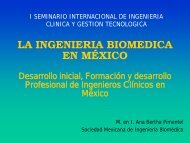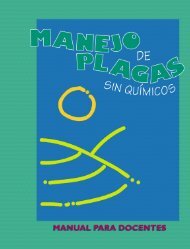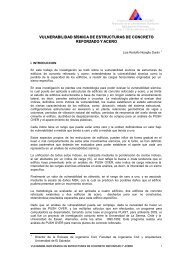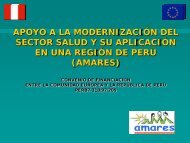a database of the National Library of M
a database of the National Library of M
a database of the National Library of M
Create successful ePaper yourself
Turn your PDF publications into a flip-book with our unique Google optimized e-Paper software.
in vivo. [Barbin A; IARC 150: 303-13 (1999)]**PEER REVIEWED**E<strong>the</strong>nobases are exocyclic adducts formed with DNA by some environmentalcarcinogens such as vinyl chloride or urethane. ... Increased levels <strong>of</strong>DNA e<strong>the</strong>no adducts have been measured in target tissues from rodentsexposed to vinyl chloride or urethane. Hepatic tumours caused by exposureto vinyl chloride in humans & in rats & lung tumours induced byurethane in mice exhibit base pair substitution mutations in <strong>the</strong> ras &p53 genes which seem to be exposure-specific & consistent with <strong>the</strong>promutagenic properties <strong>of</strong> e<strong>the</strong>nobases. Background levels <strong>of</strong> e<strong>the</strong>noadducts have been detected in DNA from non-exposed humans or animals,pointing to an alternative, endogenous pathway <strong>of</strong> formation. Thisbackground may be affected by dietary factors. It could arise from <strong>the</strong>reaction <strong>of</strong> trans-4-hydroxy-2-nonenal (or its epoxide2,3-epoxy-4-hydroxynonanal), a lipid peroxidation product, with nucleicacid bases. Elevated levels <strong>of</strong> e<strong>the</strong>no adducts are found in hepatic DNAfrom humans & rodents with genetic predisposition to oxidative stressand lipid peroxidation in <strong>the</strong> liver, & with an associated increasedrisk <strong>of</strong> liver cancer. These data suggest that DNA e<strong>the</strong>nobases could serveas new biomarkers <strong>of</strong> oxidative stress/lipid peroxidation. [Barbin A; ActaBiochim Pol 45 (1): 145-161 (1998)]**PEER REVIEWED**Previous studies have shown that a high proportion (5/6) <strong>of</strong> human liverangiosarcomas (ASL) associated with exposure to vinyl chloride (VC)contains a GC-- > AT mutation at <strong>the</strong> Ki-ras codon 13. This mutation,however, has not been found in 5 ASL or 2 hepatocellular carcinomas (HCC)induced in rats by VC. These 2 HCC did contain a mutation at codon 61 <strong>of</strong><strong>the</strong> Ha-ras gene. In order to extend this study & fur<strong>the</strong>r explore <strong>the</strong>mechanisms <strong>of</strong> tumour induction, an addl 6 ASL & 6 HCC induced in ratsby VC were analysed for ras gene point mutations, as well as 10 rat &10 murine ASL induced by vinyl fluoride (VF), & 5 ASL, 6 Kupffer cellsarcomas, 4 HCC & 2 cholangiocellular carcinomas induced by Thorotrastin rats. Tumour DNA was analysed by PCR-SSCP & direct sequencing. None<strong>of</strong> <strong>the</strong> rodent ASL contained a mutation at codon 13 <strong>of</strong> <strong>the</strong> Ki-ras geneshowing that <strong>the</strong> ras gene mutational pattern is species-specific. TheCAA-- > CTA mutation, previously found at codon 61 <strong>of</strong> <strong>the</strong> Ha-ras gene inrat HCC, was observed in 5 fur<strong>the</strong>r VC-induced HCC but was not detected in<strong>the</strong> Thorotrast-induced HCC, suggesting carcinogen-specificity. Thismutation was also absent in VC-induced ASL, which supports <strong>the</strong>cell-specificity <strong>of</strong> <strong>the</strong> ras mutational pattern in chemically inducedtumours. No predominant mutation was detected in VF- &Thorotrast-induced tumours. Thus, a given mutation in a tumour may becarcinogen-specific but also depend on <strong>the</strong> species & <strong>the</strong> cell type.[Boivin-Angele S et al; Int J Cancer 85 (2): 223-227 (2000)]**PEERREVIEWED**Vinyl chloride is a known human & animal carcinogen that inducesangiosarcomas <strong>of</strong> <strong>the</strong> liver. /The authors/ review here studies on <strong>the</strong>formation & repair <strong>of</strong> DNA adducts associated with vinyl chloride &vinyl fluoride in exposed & control rodents & unexposed humans.These vinyl halides induce e<strong>the</strong>no (epsilon) adducts that are identical tothose formed after lipid peroxidation. Of <strong>the</strong>se adducts,N2,3-e<strong>the</strong>noguanine (epsilon G) is present in greatest amounts in tissues<strong>of</strong> exposed animals. After exposure to vinyl chloride for four weeks,epsilon G levels attain steady-state concns, such that <strong>the</strong> amount <strong>of</strong> newlyformed adducts equals <strong>the</strong> number <strong>of</strong> adducts that are lost each day. Wereport <strong>the</strong> first dosimetry <strong>of</strong> epsilon G in rats exposed to 0, 10, 100 or


